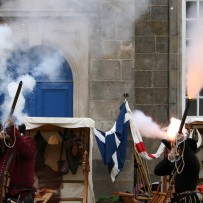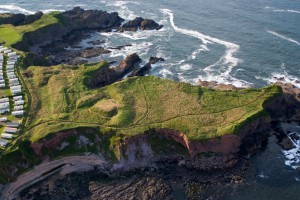Virtual Histories Project

The Virtual Histories Project is a collaboration between four museums (Eyemouth, Shetland, Taigh Chearsabhagh and Timespan) and the School of Computer Science, the School of History and the SCAPE Trust.
The aim is to bring to life historic coastal landscapes, with a focus on archaeological sites that have been investigated by SCAPE during projects at sites affected by coastal erosion.
3D recreations of landscapes have been based on survey data, and buildings and objects are based on archaeological and historical evidence. Visitors control avatars in order to explore sites, locating hotspots that allow them discover additional information (such as text, images and video). The aim is to provide a way of learning about the past in an immersive, 3D environment.
To date, models have been launched in specially constructed booths at Eyemouth Museum, Scottish Broders; and Timespan in Helmsdale, East Sutherland, while a third model has been on display at Taigh Chearsabhagh.
The Eyemouth model recreates the English and French fortifications above the town. Constructed during the ‘Rough Wooing’ in the sixteenth century Eyemouth Fort played a pivotal role in the relationship between Scotland, England and France. All that remain today are the enormous earthworks, and it can be difficult to understand the remains without seeing them from the air. Dr David Caldwell conducted excavations at the fort in the 1980s, and archaeological evidence has been incorporated into the model, together with historical research undertaken in the School of History.
Producing salt was a very important industry in Scotland, and the sixteenth and seventeenth century saltpans at Brora have been recreated for Timespan. Using coal from the most northerly outcrop in the UK, the Sutherland Estate constructed industrial buildings to house saltpans, large metal trays used to evaporate seawater. A community excavation managed to rescue information about the buildings before they were destroyed in a storm in 2012, and te model uses evidence from the excavation to recreate the former industrial landscape.
The models will also be available through a new website which is currently under construction.
The project has been funded by the Heritage Lottery Fund and Historic Scotland.


